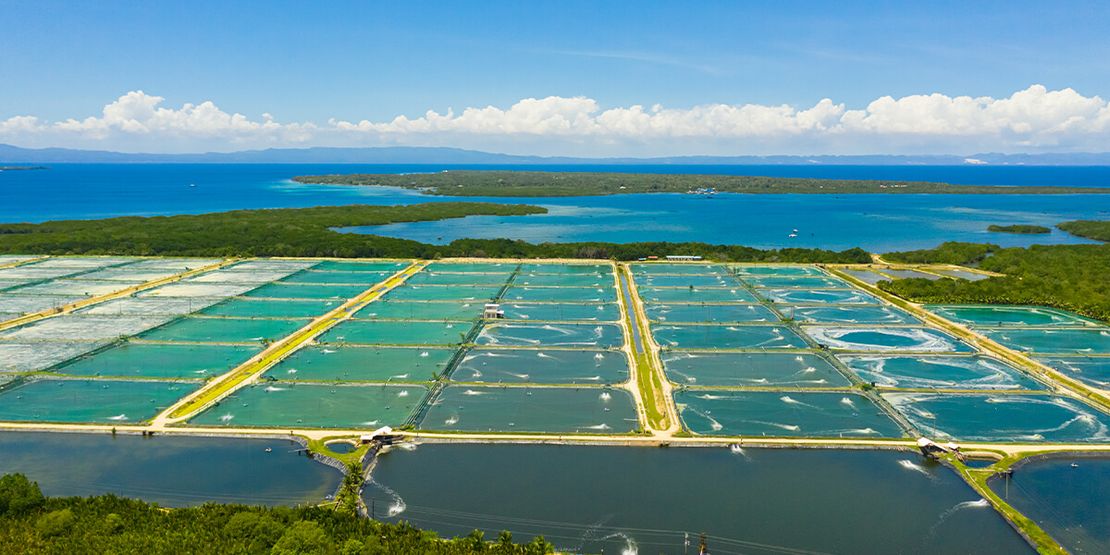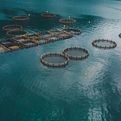Building Your Own Lucrative Shrimp Farm: A Complete Guide
Embarking on the journey of building a shrimp farm holds the promise of lucrative returns, but it demands meticulous planning and execution to ensure success. Whether you're a seasoned entrepreneur or a novice farmer, navigating the complexities of shrimp farming requires a clear roadmap and unwavering dedication.
In this complete guide, we unveil the essential steps to guide you through the process of establishing your very own shrimp farm, from choosing the optimal location to harvesting your bounty of crustacean delicacies.
#1 Selecting the Ideal Location
The foundation of a successful shrimp farm lies in selecting the perfect location. Considerations such as access to a reliable water source, favorable climatic conditions, and proximity to key stakeholders—workers, customers, and suppliers—are paramount. Whether nestled amidst the verdant countryside or situated in close proximity to urban centers, the chosen location must align seamlessly with the operational requirements and long-term vision of your shrimp farming venture.
#2 Navigating Regulatory Requirements
Before breaking ground on your shrimp farm, navigating the labyrinth of regulatory requirements is essential. Obtain all necessary permits and licenses from local and federal authorities, tailored to your specific location, farm type, and operational scale. Compliance with regulatory frameworks ensures legal legitimacy and mitigates potential risks, laying a solid foundation for the smooth operation of your shrimp farming enterprise.
#3 Determining the Optimal Farm Type
Deciphering the most suitable farm type is a pivotal decision in the shrimp farming journey. Pond, tank, and recirculating systems each offer distinct advantages and considerations. While ponds boast tradition and simplicity, tanks and recirculating systems afford greater control over water quality and sustainability. Evaluate factors such as budget, location, and long-term objectives to determine the optimal farm type that aligns with your vision for success.
#4 Crafting a Detailed Farm Design
The blueprint for your shrimp farm sets the stage for operational efficiency and productivity. Devise meticulous plans encompassing water systems, feeding and aeration mechanisms, and waste management protocols. Factor in nuances such as water flow dynamics, pH regulation, and temperature control to optimize conditions conducive to shrimp growth and wellbeing.
#5 Procuring Equipment and Materials
Equipping your shrimp farm with the requisite tools and materials is a cornerstone of operational readiness. Invest in a comprehensive array of equipment, encompassing tanks, pumps, filters, aerators, feeders, and environmental control systems. Ensure redundancy measures such as backup power sources to preempt disruptions and safeguard against unforeseen contingencies.
#6 Ground Preparation and Infrastructure Development
Preparing the farm site entails meticulous groundwork to ensure optimal conditions for shrimp cultivation. Clear the terrain, level the ground, and implement drainage systems to facilitate efficient water management. Erect essential infrastructure such as tanks and water circulation systems, laying the groundwork for seamless farm operations.
#7 Stocking Your Farm with Quality Broodstock
The cornerstone of shrimp farming success lies in the selection of high-quality broodstock. Source reputable suppliers to procure healthy shrimp specimens devoid of diseases or genetic anomalies. Exercise due diligence in selecting broodstock that embody the desired traits of robustness, growth potential, and disease resistance, laying the groundwork for a thriving shrimp population.
#8 Vigilant Water Quality Monitoring
Maintaining pristine water quality is paramount in nurturing healthy shrimp populations. Implement a rigorous regimen of water quality monitoring, encompassing parameters such as pH levels, temperature, salinity, and dissolved oxygen concentrations. Swiftly intervene to rectify deviations and uphold optimal environmental conditions conducive to shrimp growth and vitality.
#9 Implementing Nutritional Regimens
Nourishing your shrimp with a balanced diet is fundamental to fostering optimal growth and development. Administer a carefully curated blend of pellets and organic supplements, tailored to meet the nutritional needs of your shrimp population. Monitor feeding regimens closely, adjusting rations and formulations as needed to optimize growth trajectories and maximize yields.
#10 Upholding Hygiene and Disease Management
Safeguarding shrimp health necessitates meticulous hygiene and disease management protocols. Embrace stringent cleanliness standards, regularly sanitizing tanks, equipment, and facilities to mitigate disease transmission risks. Implement biosecurity measures to fortify farm defenses against potential pathogens, ensuring the robust health and wellbeing of your shrimp stock.
#11 Harvesting and Quality Assurance
The culmination of your shrimp farming endeavor culminates in the harvest of your bountiful yield. Employ gentle harvesting techniques to minimize stress and preserve product quality, ensuring premium-grade shrimp destined for discerning markets. Embrace stringent quality assurance measures to uphold product integrity and customer satisfaction, solidifying your reputation as a purveyor of superior shrimp delicacies.
In essence, building a successful shrimp farm demands meticulous planning, unwavering dedication, and a commitment to best practices. By adhering to these comprehensive steps, you embark on a transformative journey towards realizing your vision of a thriving and sustainable shrimp farming enterprise.
As you navigate the ebbs and flows of the aquaculture industry, remember that patience, persistence, and passion are the enduring hallmarks of success in this dynamic field.
Recommended for you
Aquaculture Farming: Essential Terms and Definitions for Beginners (Part 3)
Riley Sinclair (Digital Aqua Bear)
Transgender Dating in Thailand: An Inclusive Perspective
Alex (Transgender Bear)
Travel to Pattaya Guide: Everything You Need to Know
The Bear Team
Black Tiger Shrimp: Exploring Its Aquaculture and Complex Landscape
Riley Sinclair (Digital Aqua Bear)
Harnessing IoT Technology: Enhanced Shrimp Farming Efficiency
Riley Sinclair (Digital Aqua Bear)















